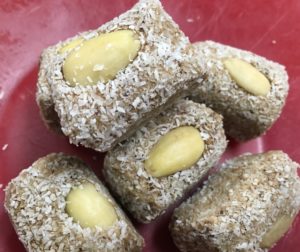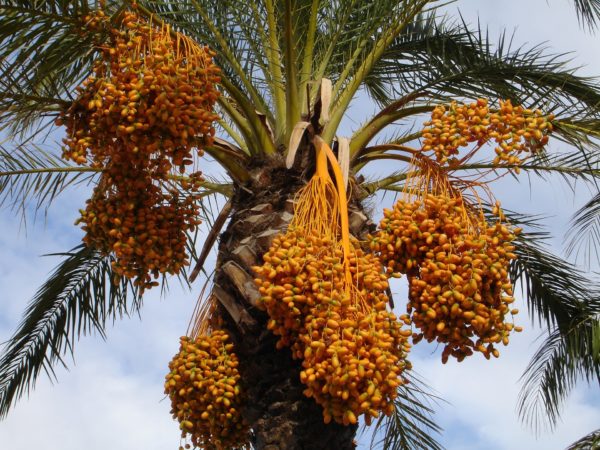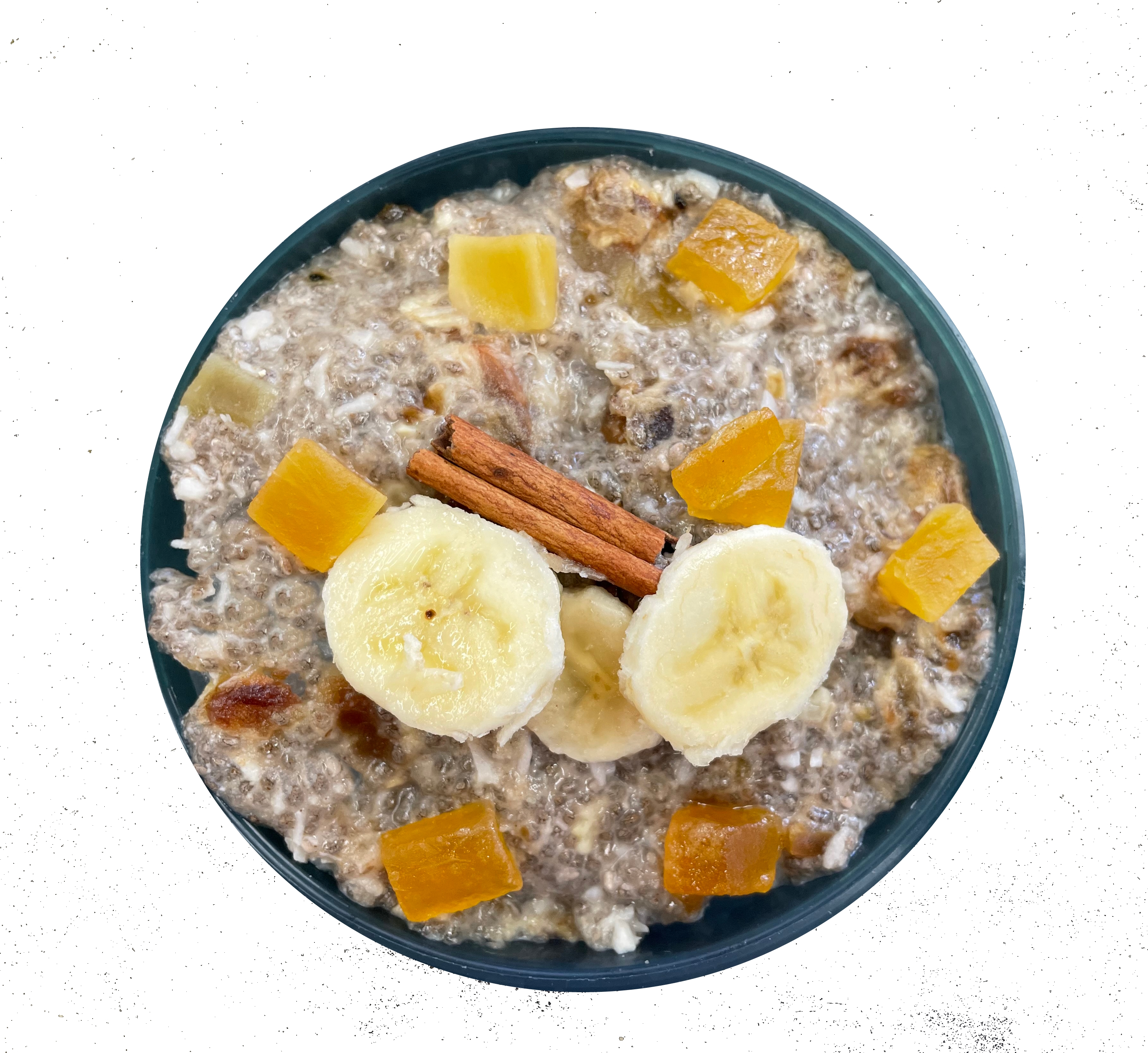Dates are packed with calories and replenish you with energy instantly after eating, making them an excellent food for hiking. Dates, like other fruits, are rich in simple carbohydrate sugars, mainly fructose and glucose, which are quickly metabolized and digested in the body. Although dates contain a large amount of naturally occurring sugar, they also offer nutritional benefits such as vitamins, minerals, electrolytes, and phytonutrients. For this reason, dates are considered a more healthful treat than a packaged snack made with refined sugar.

A Handful (about 14) of Whole Deglet Noor Dates, Pitted & Dried
3.5 oz (100g) = 282 kcal / 1172 kJ

Health Benefits of Dates
Even though dates are sugar-packed, they contain an impressive list of nutrients, including iron, potassium, copper, calcium, and magnesium.
Snacking on a large handful of dates provides 15% of your Daily Value of Potassium and 10% of Magnesium. Potassium, one of the major electrolytes, along with sodium and chloride, allow the cells in our body to function correctly and maintain energy and stability.
Sodium and potassium are the primary electrolytes lost through exercise, however salt deficiency is rare among hikers eating packaged foods. You’re more likely lacking magnesium. Electrolyte imbalance and dehydration is the primary contributor to muscle cramping and fatigue during hiking.
Eating Dates on the Trail

Like raisins, dates are naturally sweet and can be incorporated into sweet, spicy, or savory meals. Their stickiness and sweetness make them an ideal base ingredient for natural sugar in energy bars. Dried dates stored at room temperature in a sealed container will keep for a year.
Ideas for using dates on the trail:
- Stuff or roll large pitted dates with fillings such as almonds, coconut, and peanut butter for trail snacks.
- Add chopped dates to oatmeal for a natural sweetener. They are also good for adding sweetness to savory and spicy rice and couscous meals.
- Use dates as the base in DIY trail bars.
Where Dates Originate

The date comes from the fruits of the desert palm, Phoenix dactylifera. The date palm tree can grow in many different areas, but the climate must be hot and dry for the tree to produce quality fruit. At the same time, the tree requires a large amount of water to bear fruit. Thus, most dates are grown in arid regions with irrigated soils, such as Egypt, the Middle East, and California.
There are many varieties of dates varying in chewiness (moisture content), color, flavor, size, and sweetness. Depending on the type, the ripened fruit ranges in color from gold to bright-red to dark brown. The most common cultivated dates in the U.S. are the ‘Medjool’ and ‘Deglet Noor,’ which are large, moist, and incredibly sweet. You can recognize Medjool dates by their amber exterior and the specks of crystallized sugar that naturally form between the folds of the outer flesh when dried. Bite into one of these chewy fruits, and your tongue will be reminded of brown sugar and honey.
The Bottom Line
Dates are worth packing for the trail because they provide a quick energy source, replenish electrolytes lost during hiking, and are easy to find. Give them a try on your next hike. See also Outdoor Herbivore meals with dates.
Outdoor Herbivore’s Coconut Chia Peel is loaded in banana, mango, and dates, all of which are good sources of potassium
